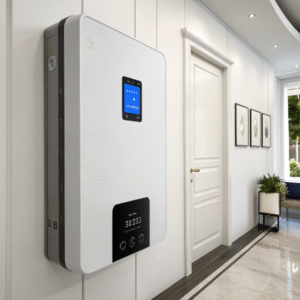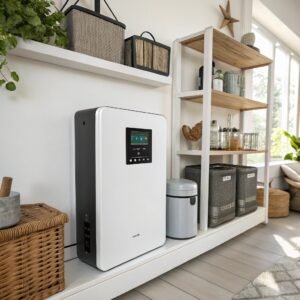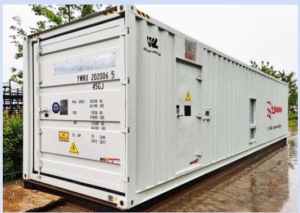What Are the Common Battery Types Used in Photovoltaic Storage Batteries?
by
What Are the Common Battery Types Used in Photovoltaic Storage Batteries?
Struggling to choose the right battery for your solar system? The wrong choice could cost you thousands in premature replacements.
The most common battery types for photovoltaic storage are lead-acid (flooded and sealed), lithium-ion (including LiFePO4), flow batteries, and sodium-based batteries - each offering unique cost/performance tradeoffs for solar applications.
Transitioning to solar power requires careful battery selection to maximize your ROI. Let's examine these options in detail so you can make an informed decision for your specific needs.
What Are the Main Components of a Solar PV Storage Battery?
Ever opened a solar battery to find mysterious components? Understanding what's inside helps optimize performance and lifespan.
Key components include battery cells (lead plates or lithium electrodes), battery management system (BMS), thermal controls, enclosure, and terminals - working together to safely store and discharge solar energy.
Battery Cell Construction and Chemistry
The heart of any solar battery is its electrochemical cells. For lead-acid batteries, I remember being amazed at how simple lead plates and sulfuric acid could store energy. Lithium-ion batteries use more complex layered electrodes:
| Battery Type | Positive Electrode | Negative Electrode | Electrolyte |
|---|---|---|---|
| Lead-Acid | Lead dioxide | Sponge lead | Sulfuric acid |
| LiFePO4 | Lithium iron phosphate | Graphite | Lithium salt |
Essential Protection Systems
During my first battery installation, I learned the hard way how critical the Battery Management System (BMS) is. A quality BMS:
- Prevents dangerous overcharging
- Balances cell voltages
- Provides state-of-charge monitoring
- Enables remote monitoring capability
Modern systems like the Tesla Powerwall include sophisticated liquid cooling systems - something I wish I had during that Arizona summer when my batteries overheated!
How Is Photovoltaic Power Converted and Stored in an Energy Storage Battery?
Imagine watching your solar panels generate power that instantly vanishes. Proper conversion and storage prevents this heartbreaking waste.
Solar DC power is converted to the battery's required voltage/current via charge controllers, with lithium batteries requiring more precise voltage matching (typically 48V) than lead-acid systems (12V/24V/48V options).
Charge Controller Considerations
I'll never forget frying my first battery bank by using the wrong charge controller. Key lessons learned:
- MPPT vs PWM: Micro-inverters maximize harvest (especially in partial shading)
- Voltage matching: My 24V panels needed different settings for 12V vs 48V battery banks
- Temperature compensation: Critical for lead-acid batteries in variable climates
The Charging Cycle Breakdown
The storage process involves three phases:
- Bulk Stage: 80% capacity at maximum current
- Absorption: Final 20% at declining current
- Float: Maintenance charge to offset self-discharge
Getting these settings wrong can reduce battery lifespan by 50% or more - a costly mistake I've seen many solar newbies make.
How Does an Energy Storage Battery Work With an Inverter to Provide Power?
Picture a blackout hitting while your fully-charged batteries sit idle. Proper inverter integration prevents this frustrating scenario.
Storage batteries connect to inverters either through DC coupling (direct high-voltage connection) or AC coupling (through separate inverter), with modern hybrid inverters like SolarEdge offering seamless automatic switching during outages.
System Configuration Options
After installing dozens of systems, I've found these inverter approaches work best:
| Type | Setup | Best For |
|---|---|---|
| DC Coupled | Battery connects directly to solar inverter | New installations |
| AC Coupled | Separate battery inverter | Retrofit projects |
| Hybrid | Combined solar+storage inverter | Most residential cases |
Real-World Performance Factors
Through painful experience, I've identified these critical integration factors:
- Surge capacity: My workshop tools required higher surge ratings
- Round-trip efficiency: Lithium's 95% vs lead-acid's 80% makes a big difference
- Depth of discharge: Regularly discharging below 50% destroyed my first lead-acid bank
Smart inverters like those from Enphase now provide detailed battery analytics that would have saved me countless diagnostic hours on early installations.
Conclusion
Choosing the right solar battery involves balancing cost, lifespan and performance - with lithium-ion increasingly dominating despite higher upfront costs due to superior longevity and efficiency.



